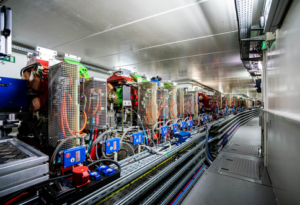ESRF-EBS highlighted in Nature’s Communications Physics
Nature journal Communications Physics has published a paper on ESRF’s Extremely Brilliant Source, confirming its innovative lattice concept paves the way for a brand-new generation of high-energy synchrotrons around the world and opens new scientific opportunities for X-ray science in key fields.
The EBS (complemented by the Streamline project) represents a major advance in accelerator science and engineering in the field of synchrotron radiation research, confirming the solidity and the capabilities of the HMBA design, which was invented by Pantaleo Raimondi, and developed by Pantaleo Raimondi and the ESRF Beam Dynamics Group. Its performance is already opening new opportunities in X-ray science, with impressive first scientific results in vital fields including sub-cellular imaging of human organs and time-resolved serial crystallography, enabling the development of new drugs and new strategies in addressing disease.

Another application is the study of new materials for a circular economy or sustainable energy production and storage, where the need for following the relevant processes under in situ and operando conditions, from the atomic to the device scale, calls for new X-ray measurement protocols and approaches. On the more fundamental side, the availability of nanometric, high-energy X-ray beams opens the road into unchartered territories of extreme conditions, with investigations of materials at terapascal static pressures, as they are prevalent in the larger planets of the solar system as well as in most of the exoplanets discovered so far.